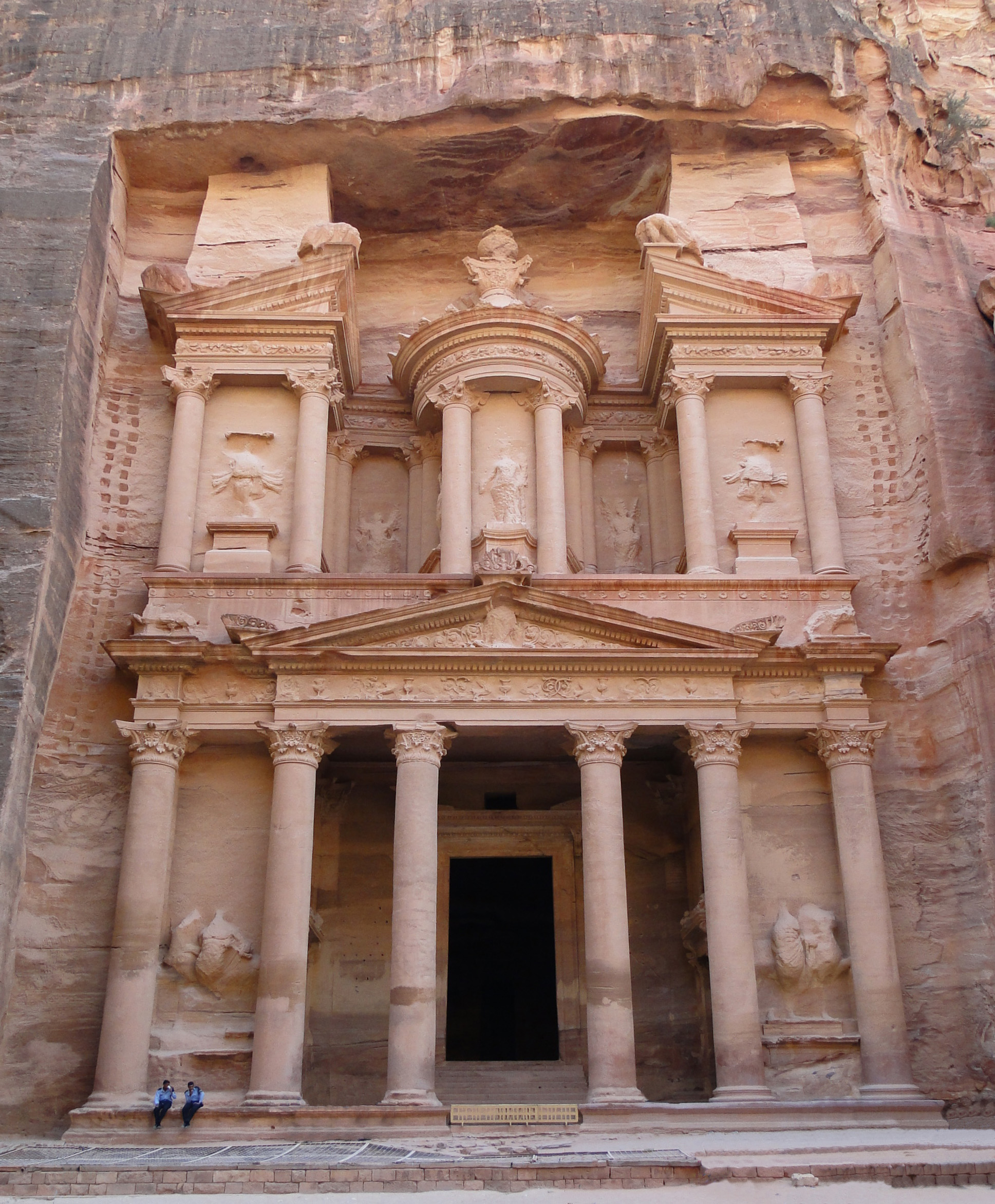Aretas IV of Nabatea and Petra (2 Corinthians 11)
Illustration: The Kazneh” at Petra (perhaps the tomb of Aretas IV)
Aretas IV ruled the desert kingdom of Nabatea from 9 B.C. to A.D. 40. With its capital at Petra, this nation included southern Syria, Jordan, the Negev of Israel, the Sinai peninsula, portions of the eastern desert of Egypt and the Northwestern region of Saudi Arabia. Beginning during the fourth century B.C. Nabatea began to amass great wealth through caravan trade in luxury goods from the East.
Aretas IV, although a usurper with only a marginal claim to the throne, became the most powerful ruler of Nabatea, eventually winning official recognition from Caesar Augustus. During his reign the kingdom reached its zenith commercially, culturally and artistically. Numerous coins minted by Aretas IV have survived, many of them bearing his image.
One of Aretas IV’s daughters married Herod Antipas, the son of Herod the Great and the ruler of Galilee and Perea in Transjordan from 4 B.C. to A.D. 39. Herod Antipas later divorced Aretas’ daughter i order to marry Herodias, the wife of his half brother Herod Philip I. John the Baptist spoke out against this, warning Herod Antipas “It is not lawful for you to have your brother’s wife” (Mark 6:18). John was imprisoned and eventually executed at the request of Herodias (Matthew 14:1-12, Mark 6:14-29). As there was also a dispute between Aretas IV and Antipas regarding rule over a territory called Gamalitis, Aretas used Antipas’ rejection of his Nabatean wife as an occation to wage war. The Jewish historian Josephus recorded that Aretas IV destroyed much of Antipas’ army a few years afterward, many Jews viewed this as divine retribution for John’s execution (Antiquities, 18.5.2).
The most famous Nabatean site is Petra, located in modern Jordan in what was once Edomite territory. It lay near the King’d Highway, one of the important trade routes on the eastern side of the Jordan River. The site occupies an area approximately 1,6 km long and slightly less distance in width. Magnificent tombs and funerary banquet halls had been carved into the sandstone mountains surrounding the area, the most famous of which are the Treasury of the Pharaoh and the Royal Tombs. An ancient cultic site sitting atop one of the surrounding peaks features one of the best preserved altars from antiquity. Petra may possibly be identified as the Old Testament site of Sela, captured by Amaziah of Judah (2 Kings 14:7). By 312 B.C., when the Greeks took control of the Near East, Petra was the capital of the Nabateans, who may have migrated from the Persian Gulf.
After Paul began preaching in the synagogues of Damascus, the local Jews, with the support of the Roman ethnarch under Aretas IV, attempted to kill him, but he was able to escape (Acts 9:23-25, 2 Corinthians 11:32-33). This incident indicates that both Rome and Aretas IV had political power in Damascus.
